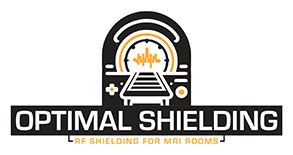In the world of MRI room construction, there is no shortage of unethical general contractors who do not have a background in RF shielding construction methods yet will attempt to build an MRI shield themselves nonetheless despite having no background in the physics of RF shielding. Many untrained contractors view the MRI shield as nothing more than a metal box within the scan room. However, if truth be told, the RF shield is an extension of the MRI system because shielding performance impacts image quality and careful detail must be applied throughout the entire process of installing an RF shield.
As the owner of a diagnostic imaging center, it is imperative that you insist that your RF shield be built by an actual RF shielding company otherwise you could be liable for damage caused by a low performing MRI shield. If a contractor insists on not using an MRI shielding vendor, then I highly recommend you find a new general contractor because chances are they are merely trying to cash in at your expense. We have seen this scenario play out far too often and have had to help repair numerous RF shields that were failing to meet OEM standards.
An MRI shield that doesn’t perform to OEM specifications can be the result of numerous factors. RF leaks are one major source of failures, and it is the result of incorrect installation methods. In fact, Optimal Shielding has seen entire RF shields sealed with copper tape at the seams where panels are connected and if this is happening to you then immediately halt construction and contact a real MRI shielding vendor before you get left holding the bag. Using the wrong waveguides for example can turn a waveguide into an RF antenna thus radiating radio frequency waves into a shield that must be free of exterior RF interference/noise. Building a shield that is not electrically isolated also fails to meet OEM specifications and many inexperience installers overlook this key aspect of shielding by failing to correctly use dielectrics to isolate the shield from the parent building.
Contact Optimal Shielding today to avoid the costly mistake of allowing an inexperienced construction crew to build your MRI Shield-which must be regarded as an extension of the MRI system and not merely a construction project. Low performance RF shielding can cause image quality issues in the form of image artifacts and consequently, insurance companies may refuse to fund treatment based on images that contain artifacts. This could lead to costly downtime and loss of revenue while your MRI system is down due to shielding repairs.
In short, building an RF shield that has less than 100 DBs of RF attenuation coupled with OHM readings out of specification can be a recipe for disaster that will make it impossible to warranty your shield. Designing a quench vent system without regard to the mathematical formulas that determine the diameter of your piping and height of the diffuser can cause you to fail state inspections and thus force you to shut down operations. Do not hesitate to reach out to Optimal Shielding if your RF shield requires an audit or repair to get it back into specification so that you can continue scanning patients.
